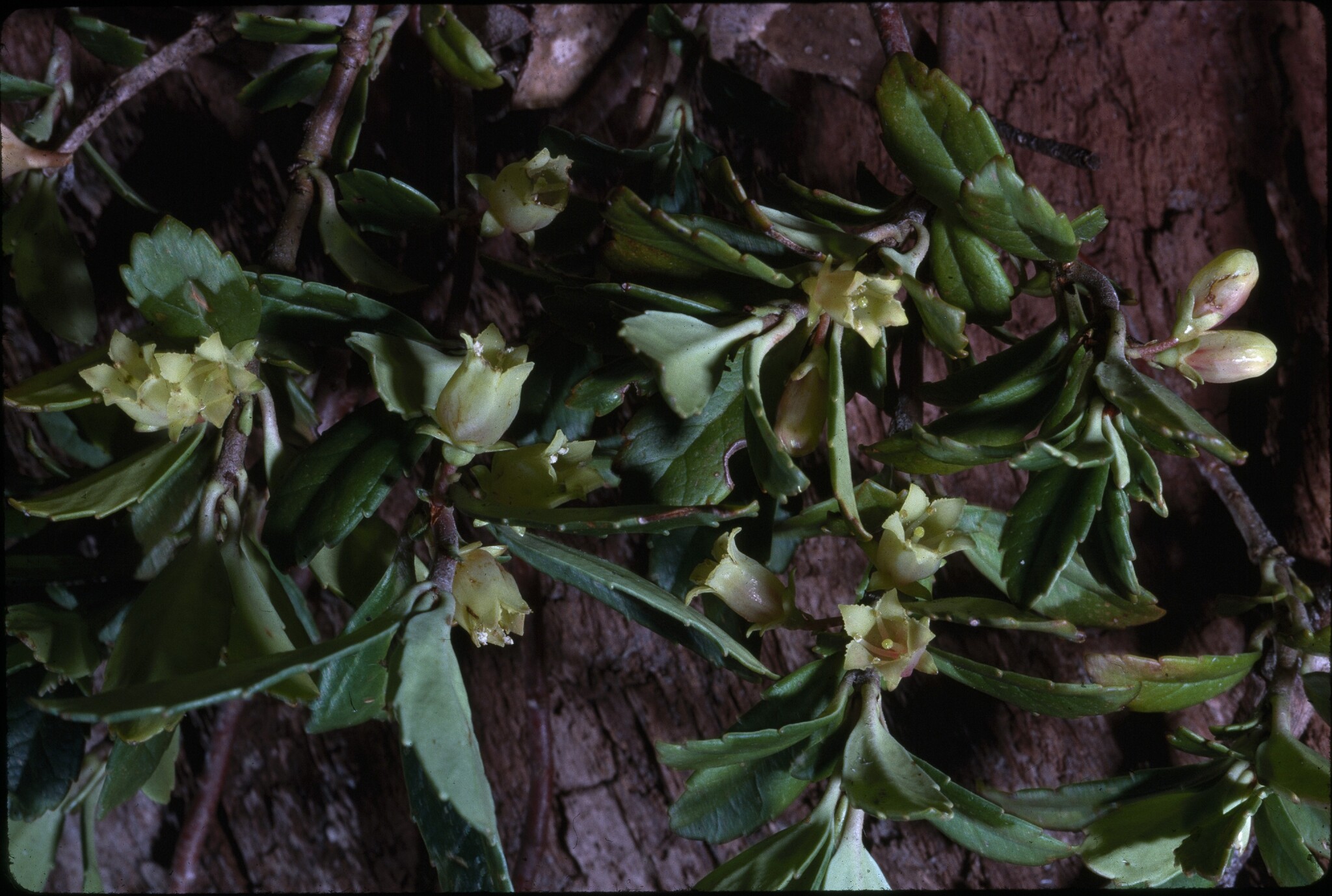
Shrubs, sometimes epiphytic. Leaves more or less opposite or in whorl-like groups, simple, entire or toothed. Flower clusters axillary in umbels on the old wood, occasionally flowers solitary. Flowers bisexual, regular, bell- to funnel-shaped or tubular, often permanently closed and strongly scented. Parts mostly 5. Stamens alternating with the petal lobes; filaments attached to the tube or free. Ovary inferior or half-inferior with 2-3 chambers, each containing 1-several ovules. Fruit a mostly 2-chambered berry with 1-many seeds.
Once considered closely related to the Caprifoliaceae, a northern family, the Alseuosmiaceae containing Gondwanan elements was subsequently segregated and is now considered more closely related to the Pittosporaceae. Wittsteinia was formerly considered an anomalous member of the Ericaceae or Epacridaceae.
3 genera with about 12 species from the W Pacific, Australia (2 genera and 2 species), New Zealand, New Caledonia and Papua New Guinea.
Leaves often in whorl-like arrangements; flowers usually permanently closed (cleistogamous) and strongly scented.
van Steenis (1984).
Source: (2002). Alseuosmiaceae. In: . Horticultural Flora of South-eastern Australia. Volume 3. Flowering plants. Dicotyledons. Part 2. The identification of garden and cultivated plants. University of New South Wales Press.
